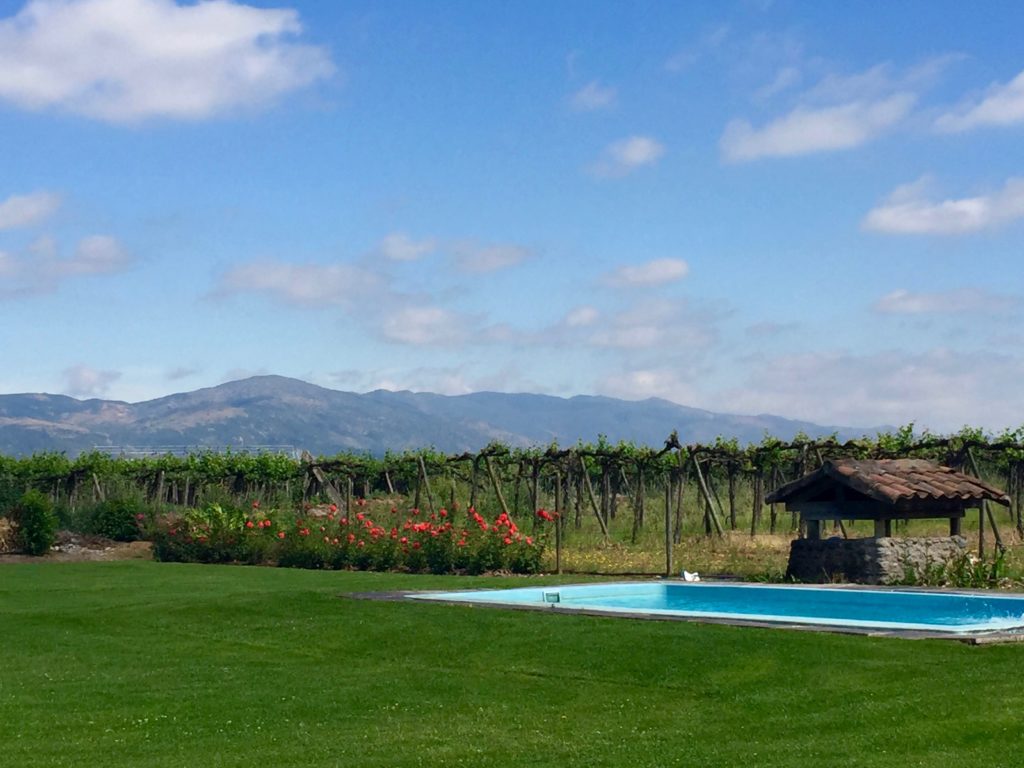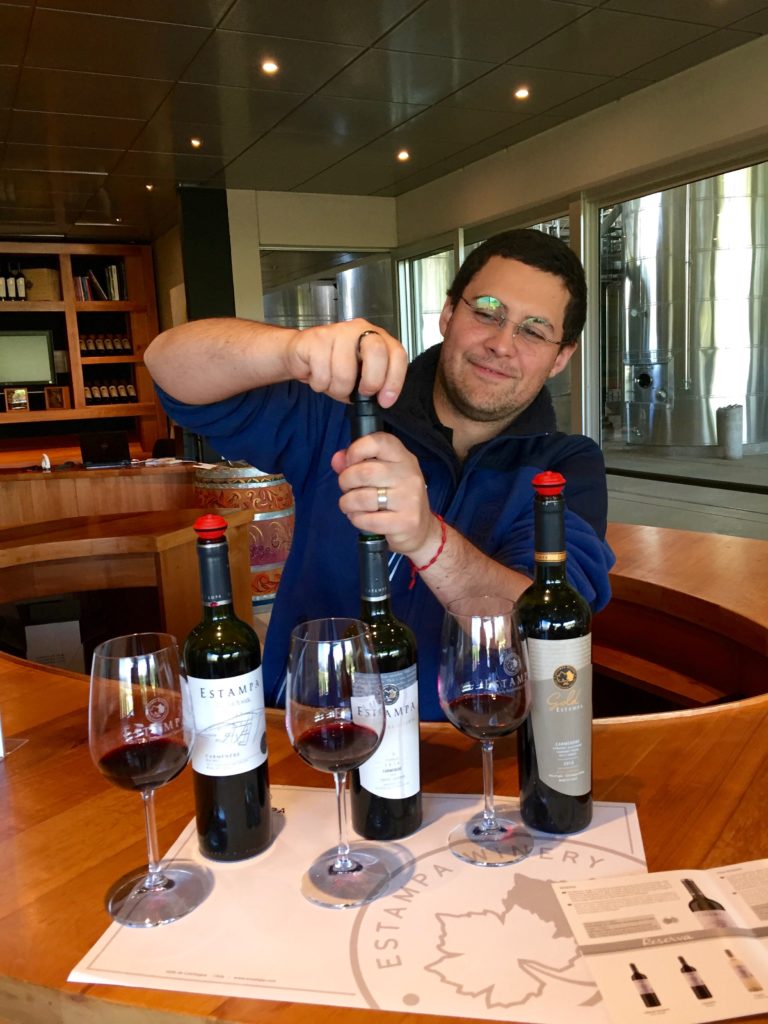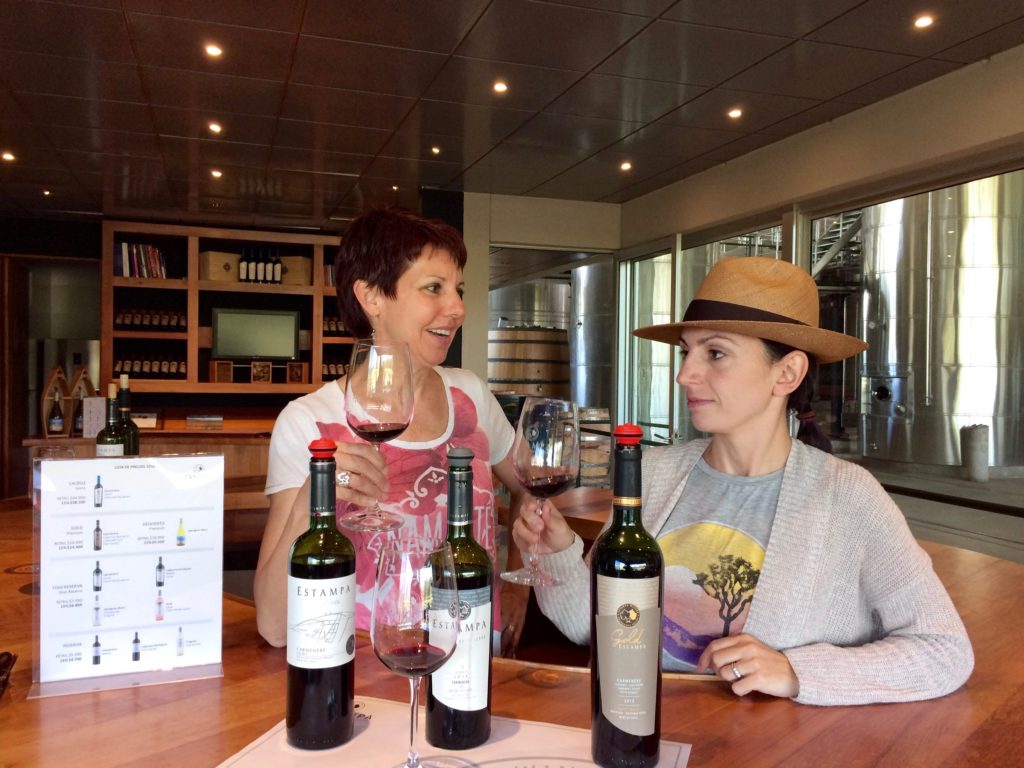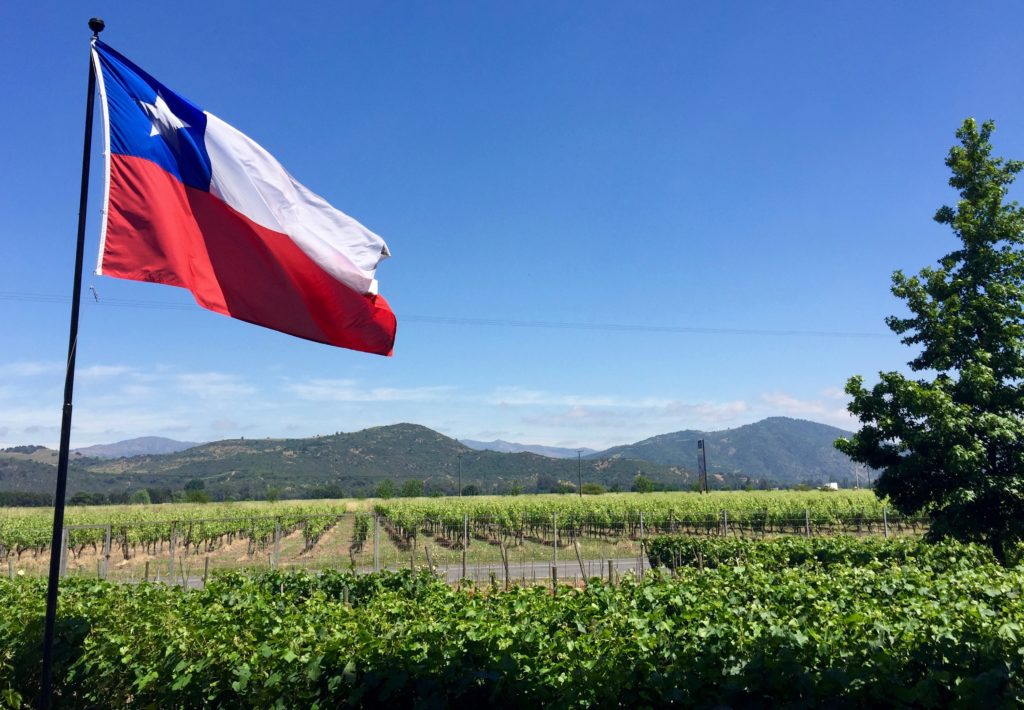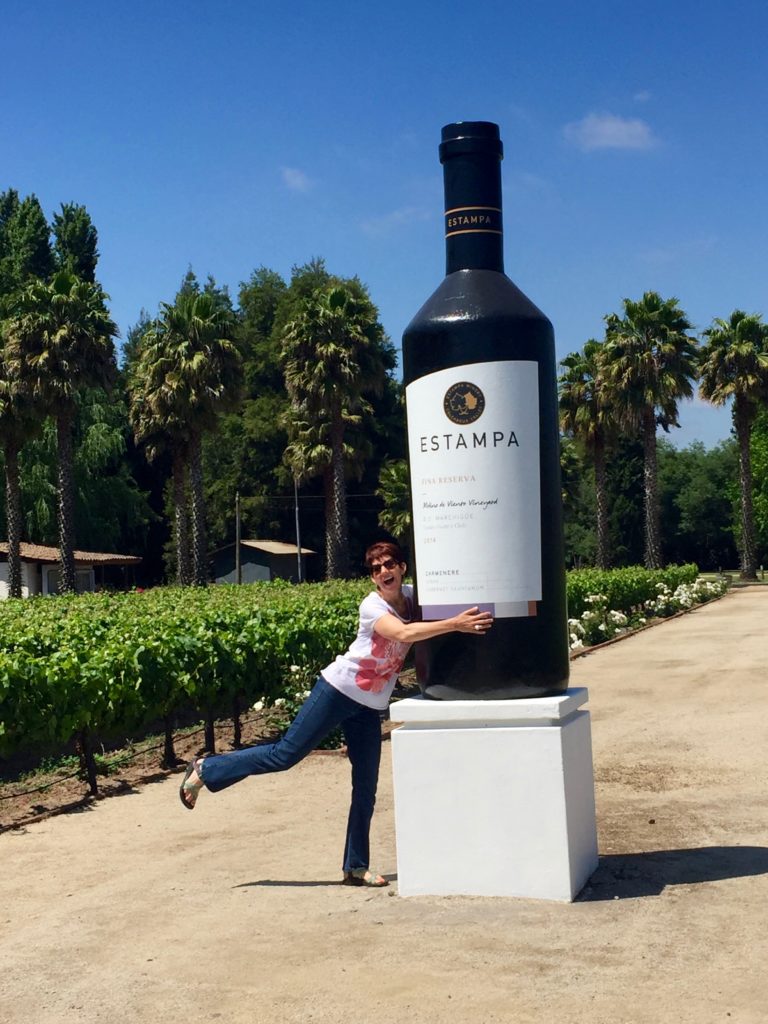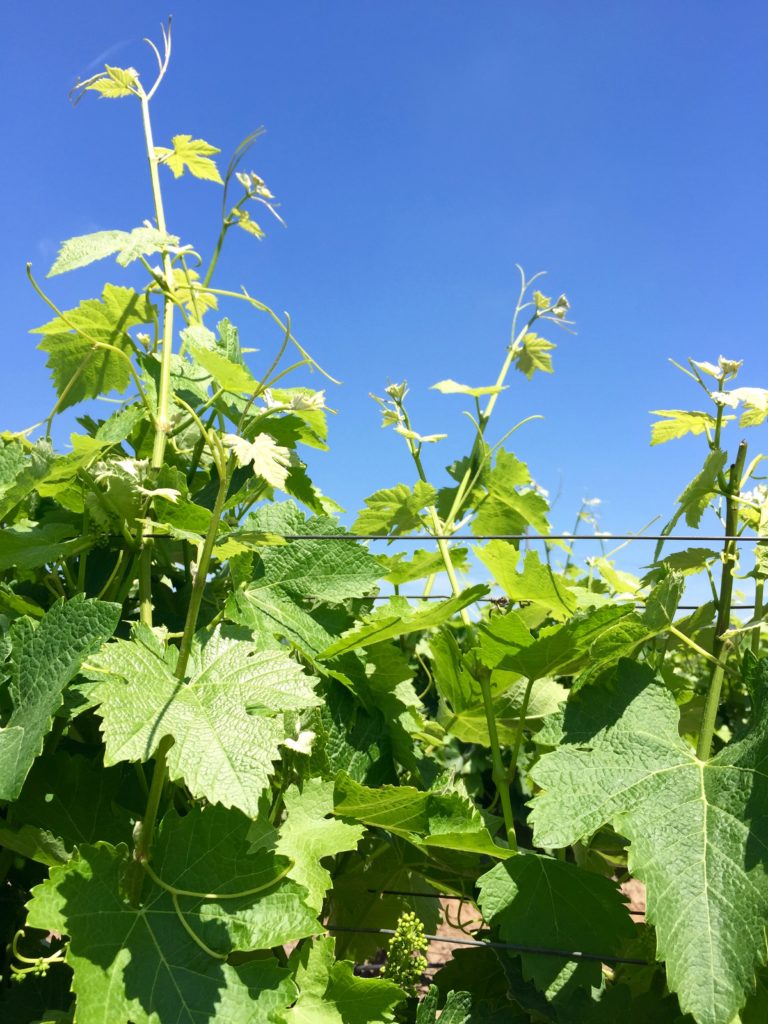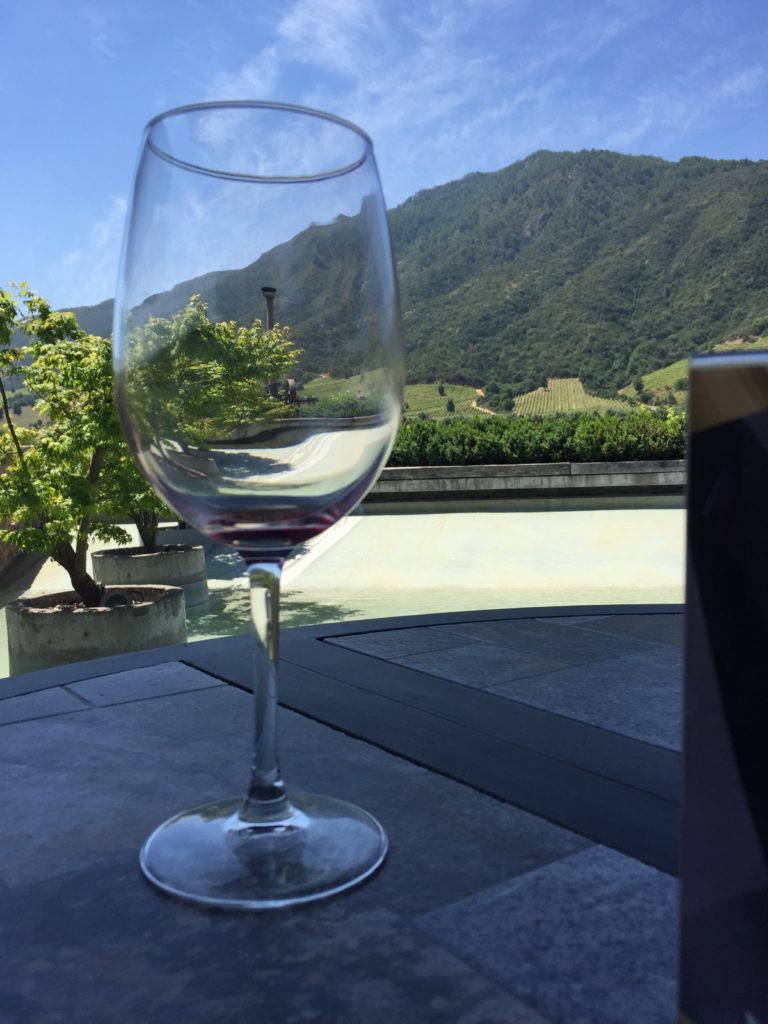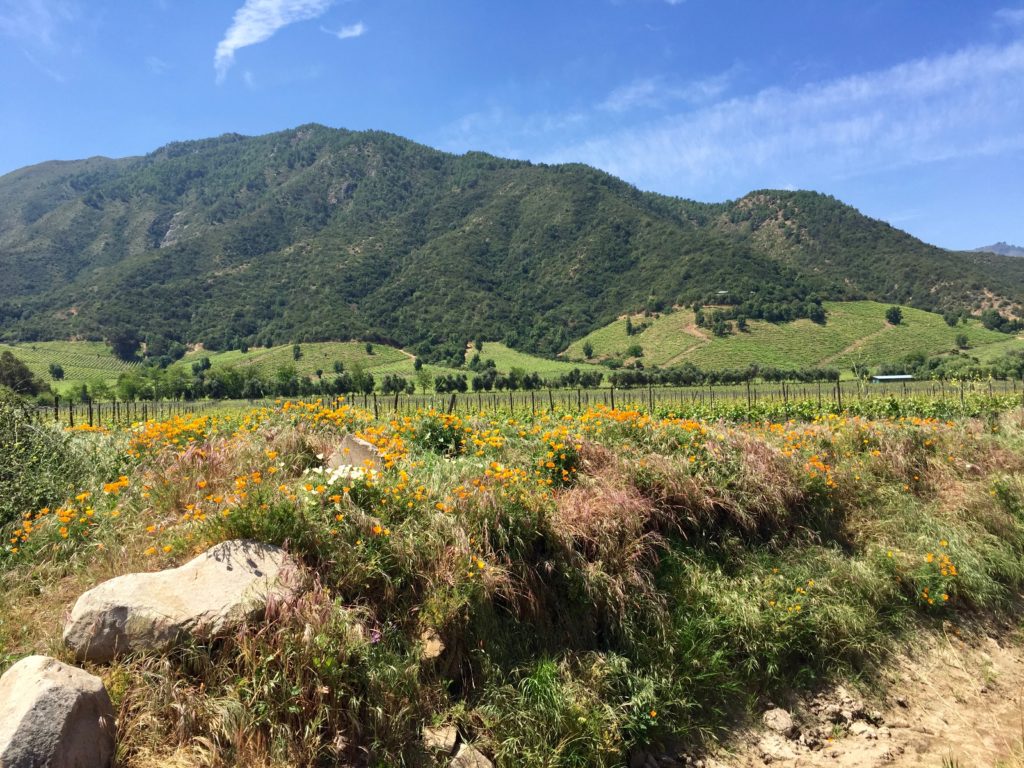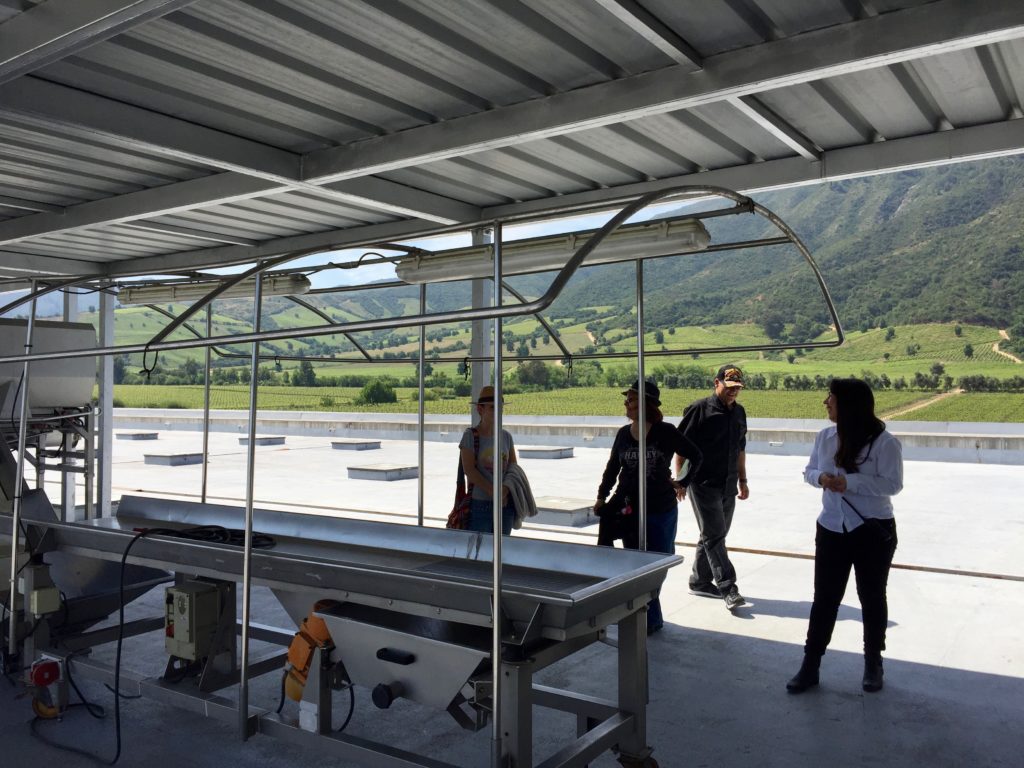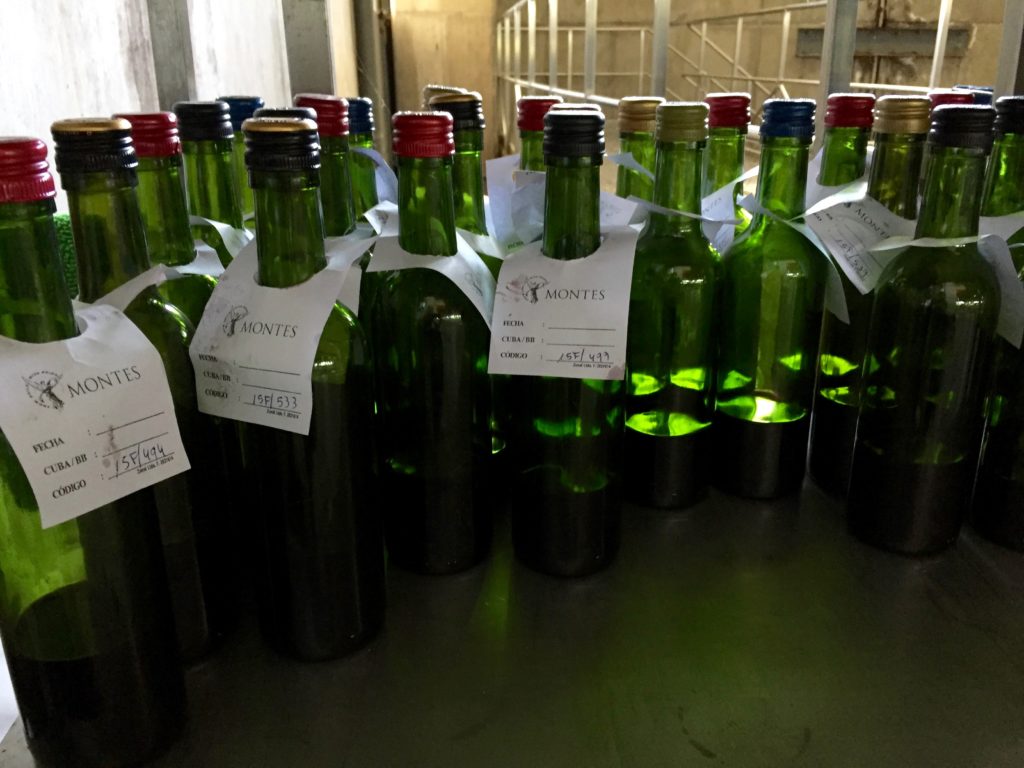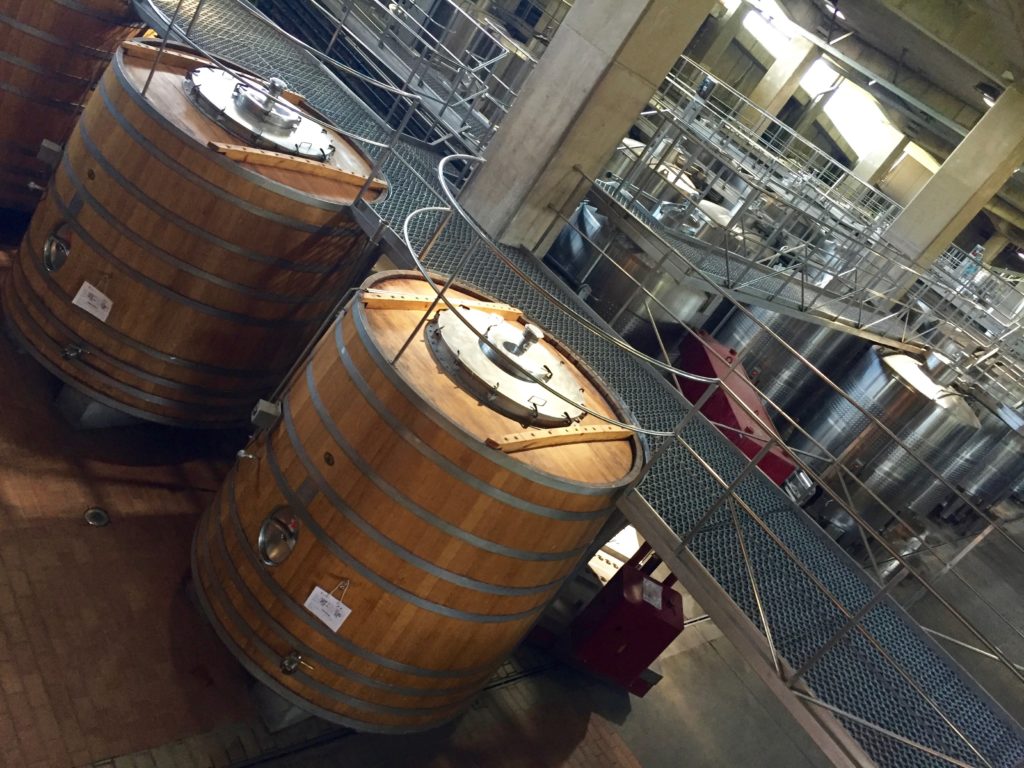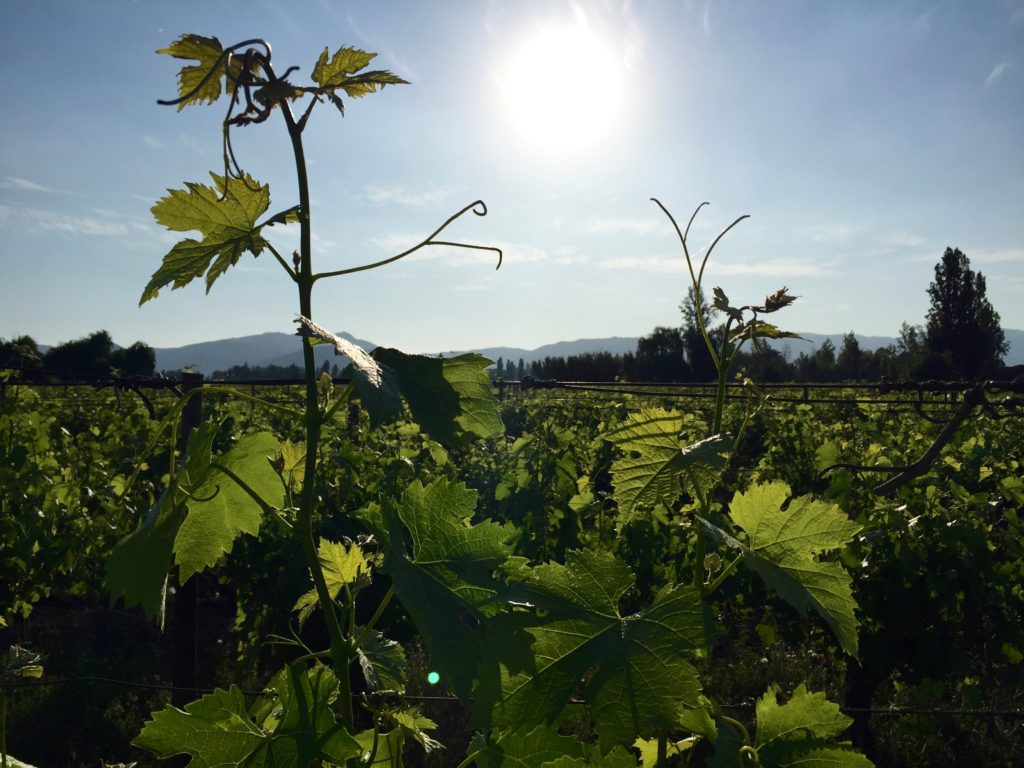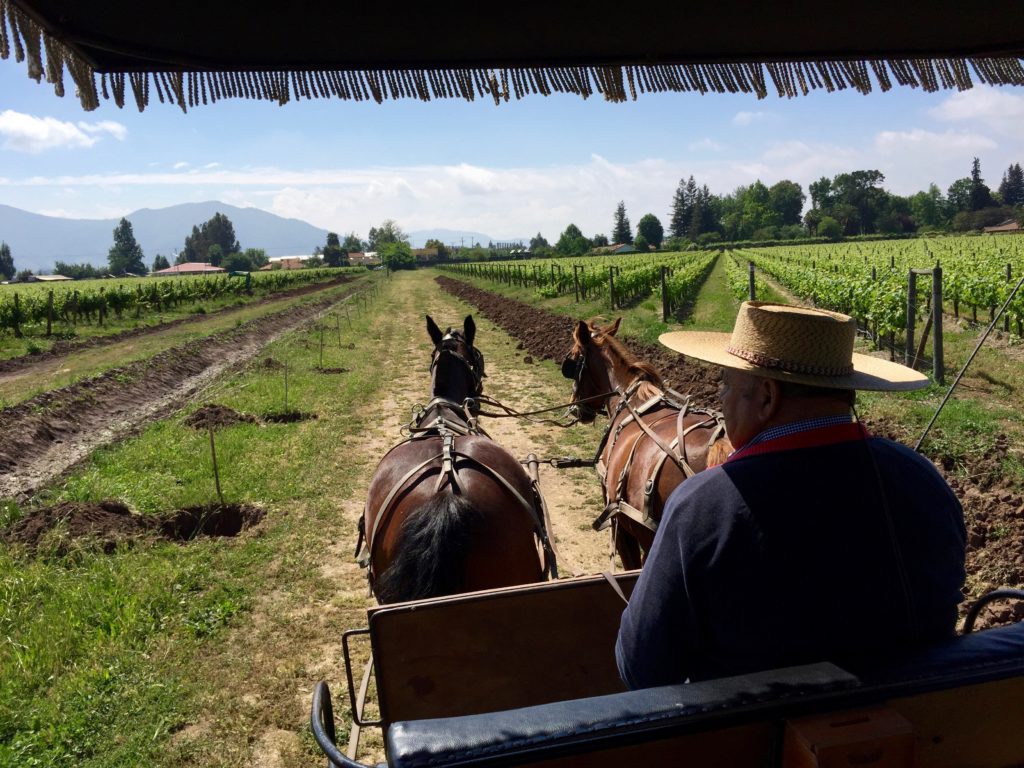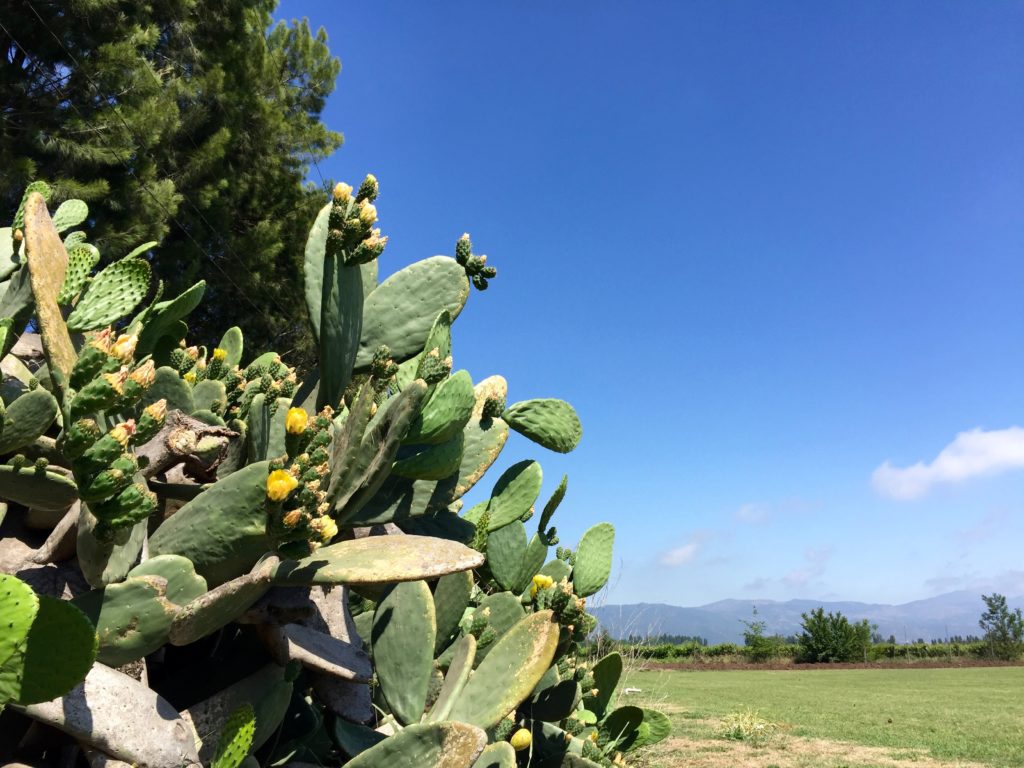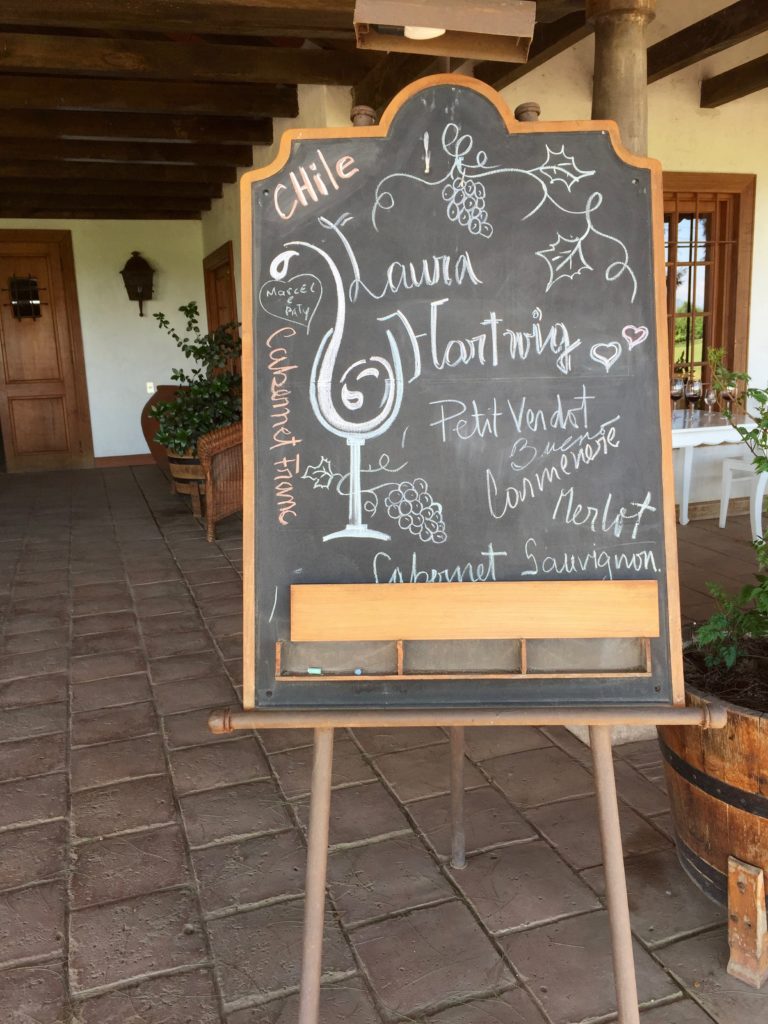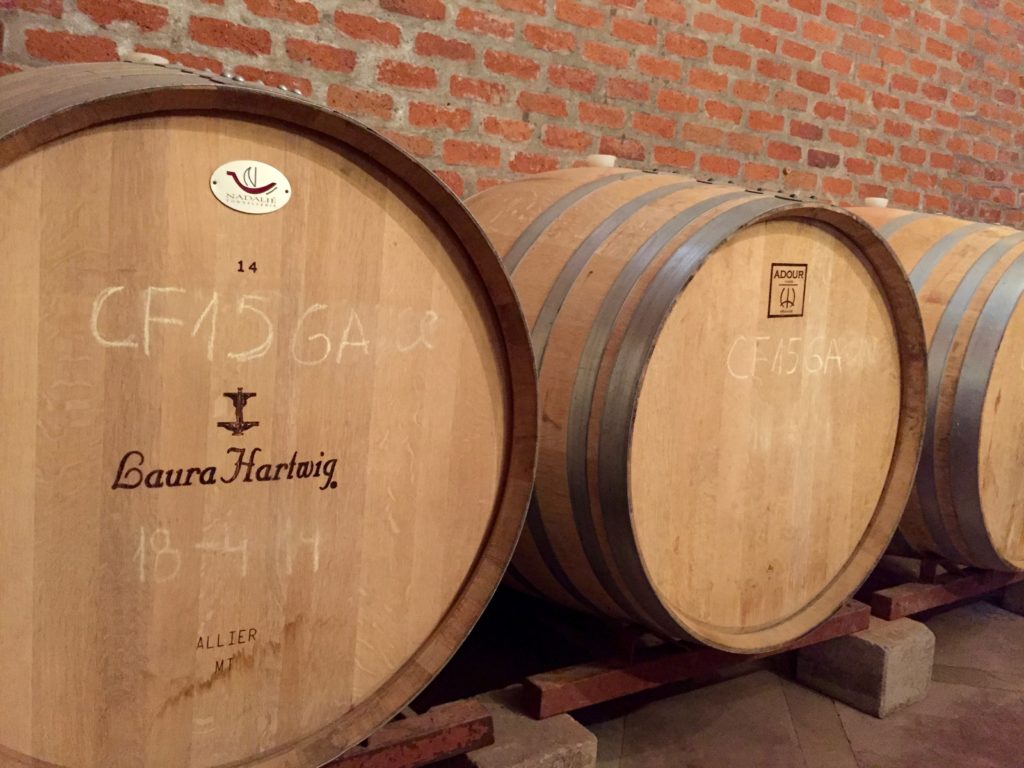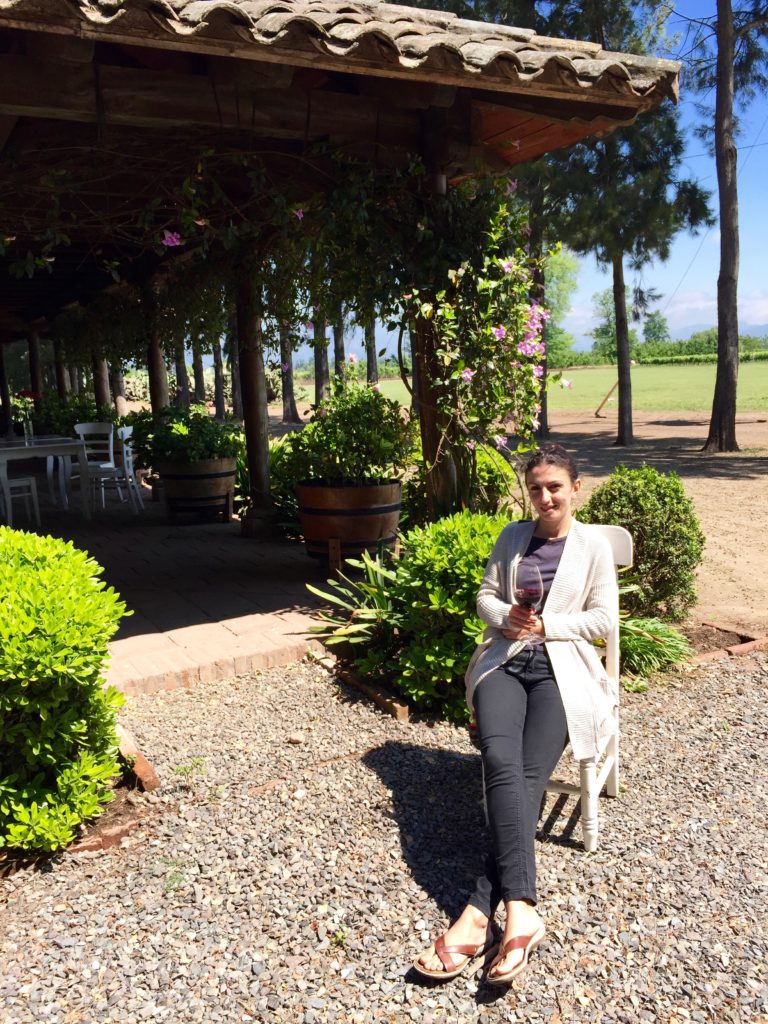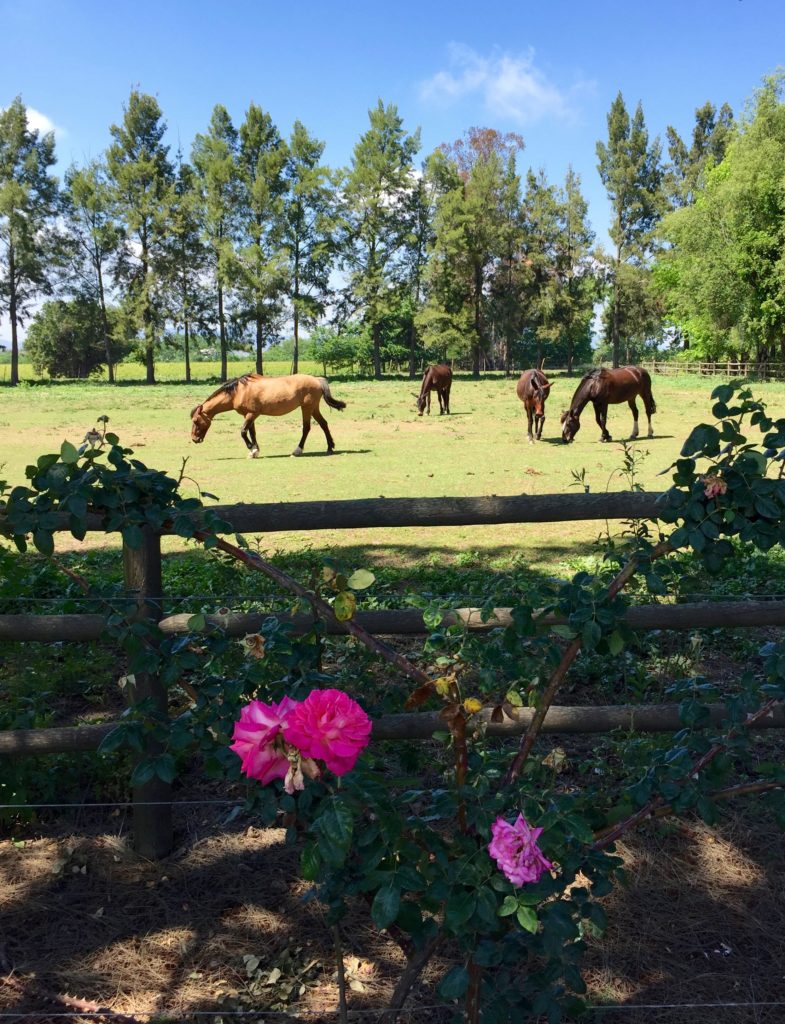Less than three hour’s drive from Santiago, the world transforms from concrete and glass into mountains and vineyards. The Colchagua Valley dissects central Chile, from the Pacific Ocean in the east to the Andes Mountains in the west, and boasts a perfect climate for growing grapes – particularly red wine varieties.
As it happens, I love red wine. And mountains. And four-day weekends.
Friday after school, fellow newbie Stella and I ditched our families and road-tripped to Santa Cruz in the Colchagua Valley. We encountered heavy congestion on the Pan-American Highway, but I absentmindedly followed the car in front of me, which crossed the median into a lane closed to oncoming traffic and opened to those of us heading south. We whipped past miles of standstill traffic and finally merged back onto the correct side of the highway, breathing a sigh of relief that we hadn’t missed our exit. At a big toll plaza, we waited in line while scores of vendors in fluorescent orange vests hawked drinks, bread, and empanadas.
Finally, we arrived at Vino Bello, a small bed-and-breakfast owned by a former Nido de Aguilas teacher and her husband. Surrounded by vineyards, the 1930s manor house was renovated in 2003 and featured simple but comfortable accommodations. We met the owner, Janine, at the nearby Vino Bello restaurant and enjoyed chatting with her about common acquaintances and her transition from educator to business owner.
It didn’t take long for my usual food-induced joy to surface, and after a pisco sour, a glass of wine, delicious beetroot ravioli stuffed with butternut squash, and an apple crumble de frutas, I was blissfully sleepy.
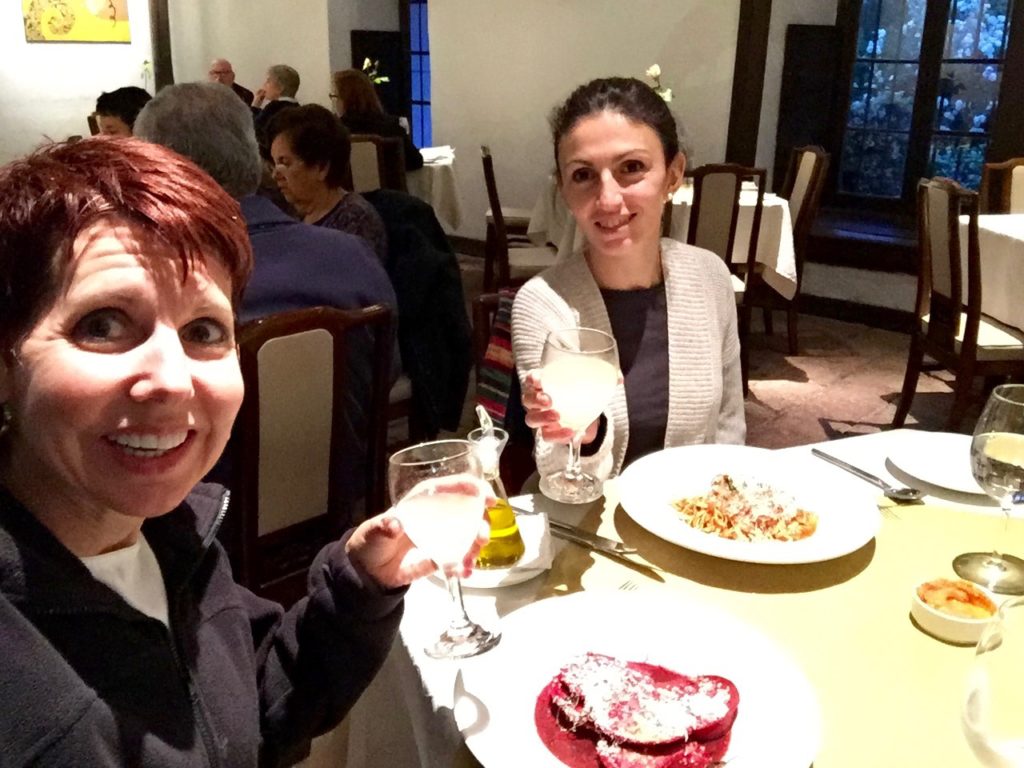
The next morning, Stella and I lingered over breakfast and then lingered some more outside with our books.
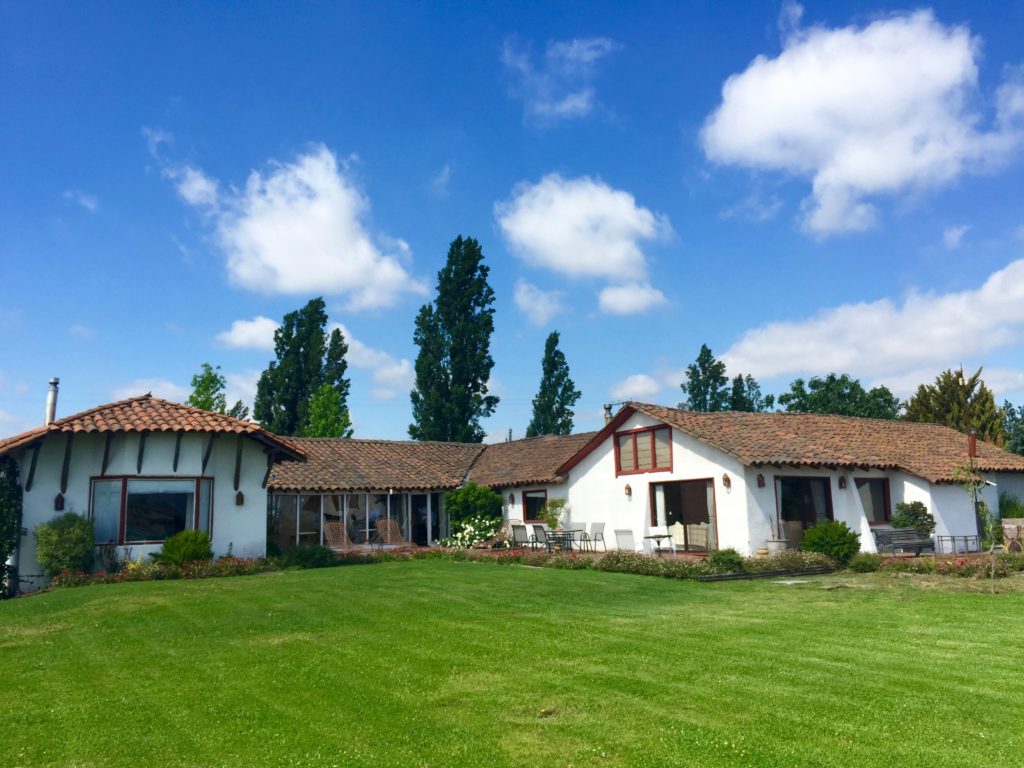
The hotel clerk helped us make arrangements for the day, and we eventually headed out to the wineries.
First stop: Viña Estampa, where Fillipe entertained us and poured samples for tasting. He told us that Estampa specializes in blends. According to the Estampa website:
The technique of blending consists of carefully combining two or more varieties to craft a single wine. Each variety contributes its finest characteristics to the blend to create a beautifully balanced wine with unique personality.
Fillipe tried to explain the origin of the winery’s name, but I didn’t understand until I read the story online. The family-owned winery traces its agribusiness roots to a flour mill called “La Estampa Mill” in what is now the Indepencia neighborhood of Santiago. The mill was named in honor of a legendary estampa – or pocket-sized prayer card – with a picture of Nuestra Señora del Carmen (Our Lady of Mount Carmel). More than 200 years ago, the picture allegedly circled overhead for about 15 minutes before flying across the Mapocho River and landing next to a woman teaching catechism to her children. A Catholic grotto, and later a chapel, was erected at the site.
We tasted three Estampa blends:
2014 Estampa Reserve Carménère-Malbec,
2014 Estampa Fina-Reserva Carménère-Syrah-Cabernet Sauvignon,
and 2013 Gold Estampa Carménère-Cabernet Sauvignon-Cabernet Franc-Petit Verdot.
They were all delicious, but we chose the middle-range wine to take home.
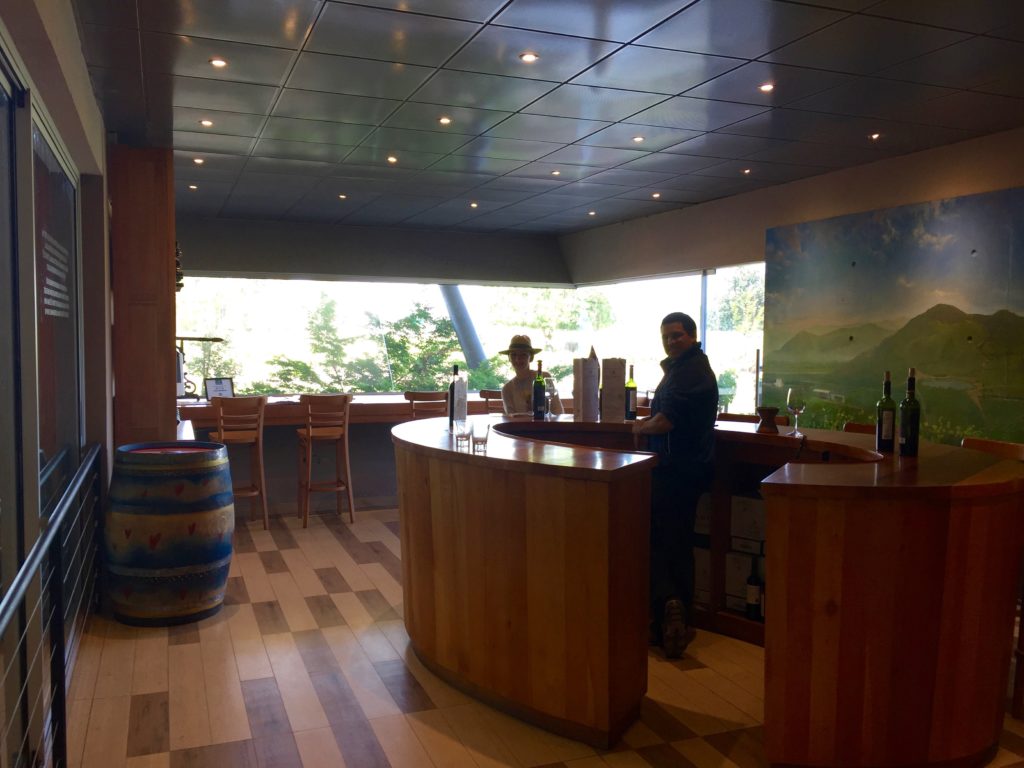
A stroll through Estampa’s varietal garden…
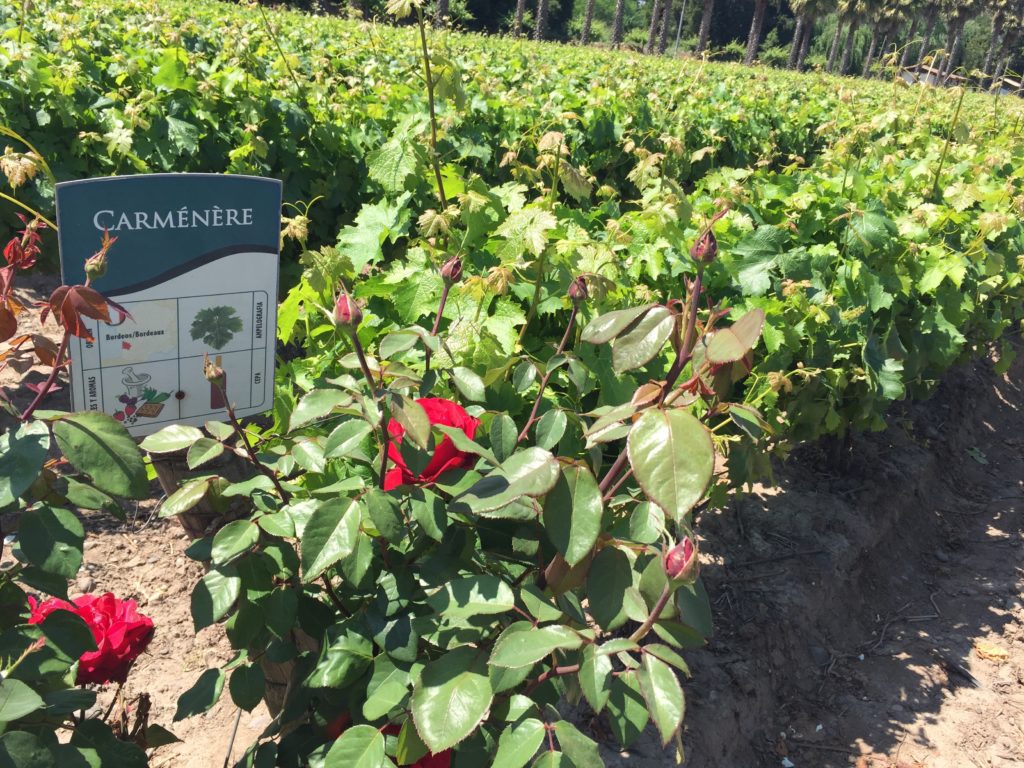
… and we were off to our next stop: Montes.
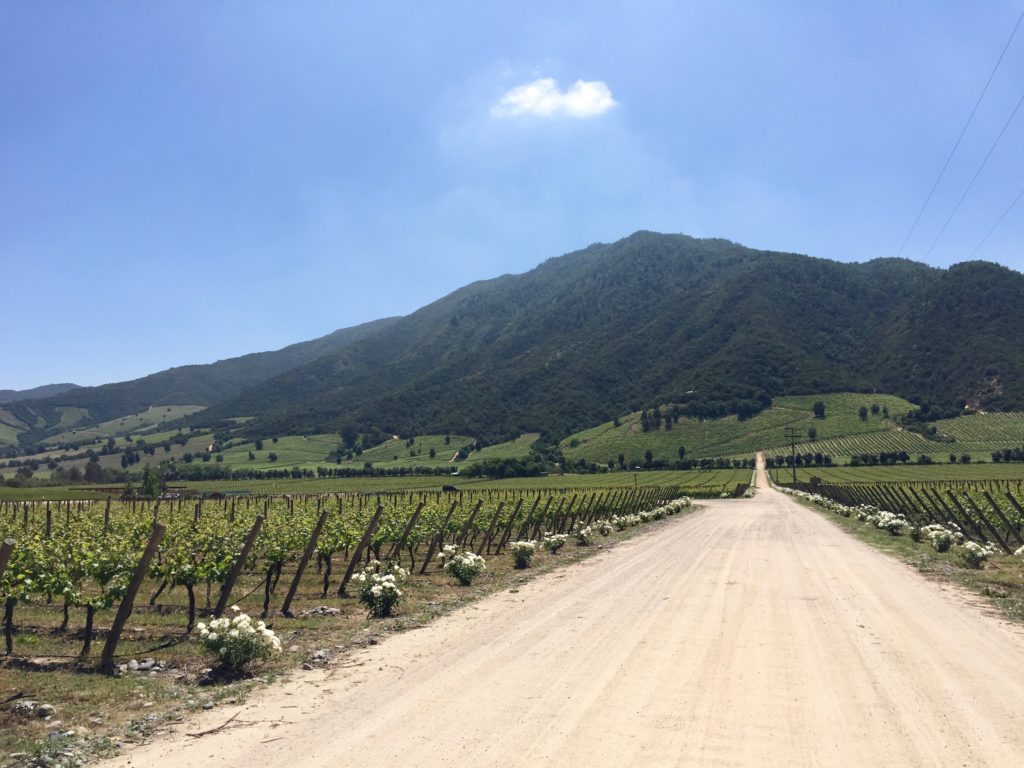
After a tranquil, tasty lunch overlooking the vineyards and hillsides, we met up with a couple from Puerto Rico and a family from Brazil for the winery tour.
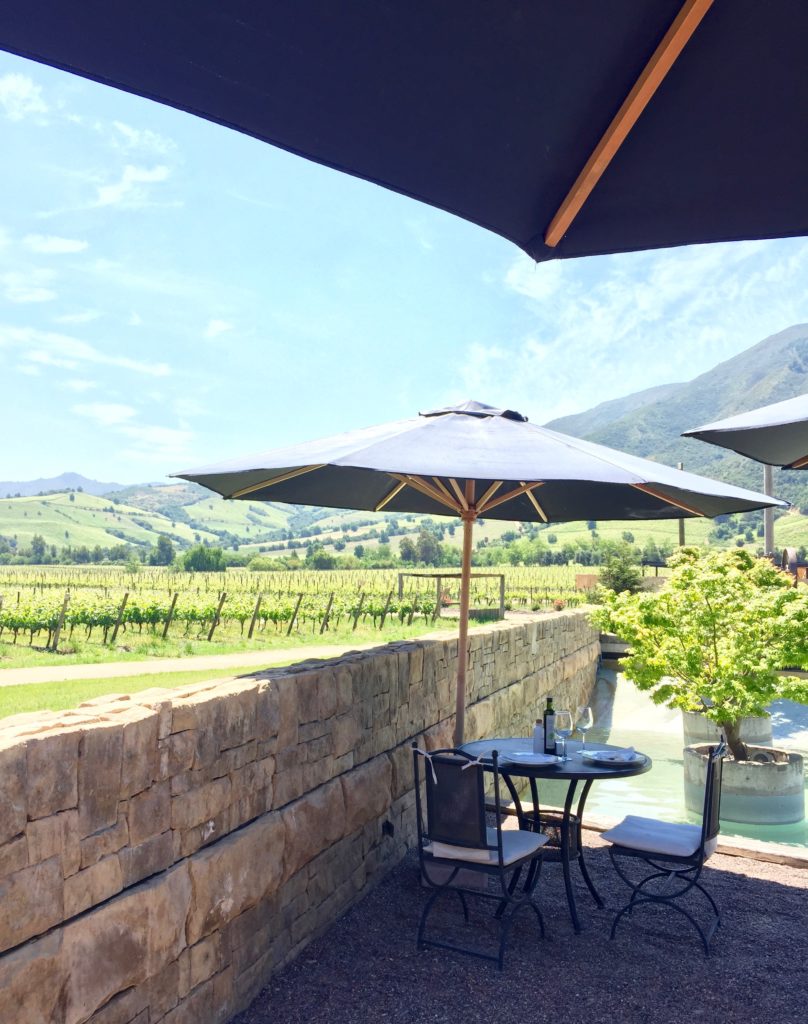
Our guide, Maria Angel, explained that Montes doesn’t irrigate its vines in this valley. Dry farming yields smaller bunches but higher quality grapes, she said. She took us to the roof, where ladies sort the grapes, and equipment separates the stems before dumping grapes down a hose into fermentation tanks below. She also showed us some examples of feng shui principles incorporated into the building’s design.
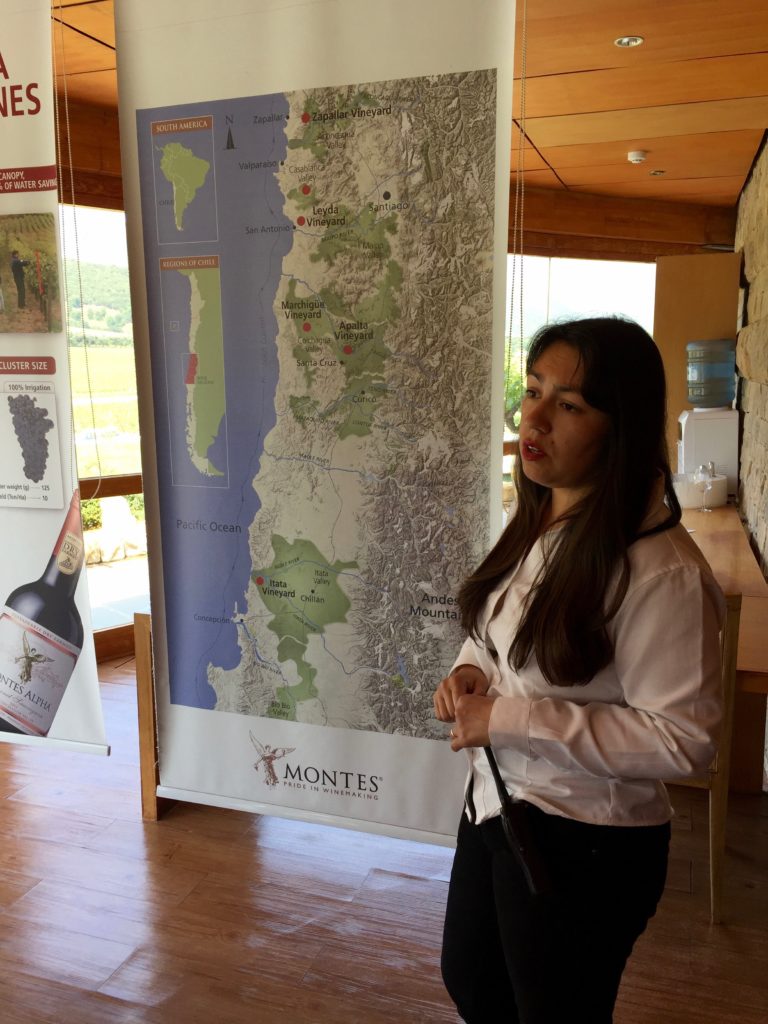
For our tasting, we sampled:
2015 Outer Limits Sauvignon Blanc,
2013 Montes Alpha Cabernet Sauvignon,
2014 Montes Alpha Carménère,
and 2015 Outer Limits CGM (Carignan, Grenache, Mourvèdre).
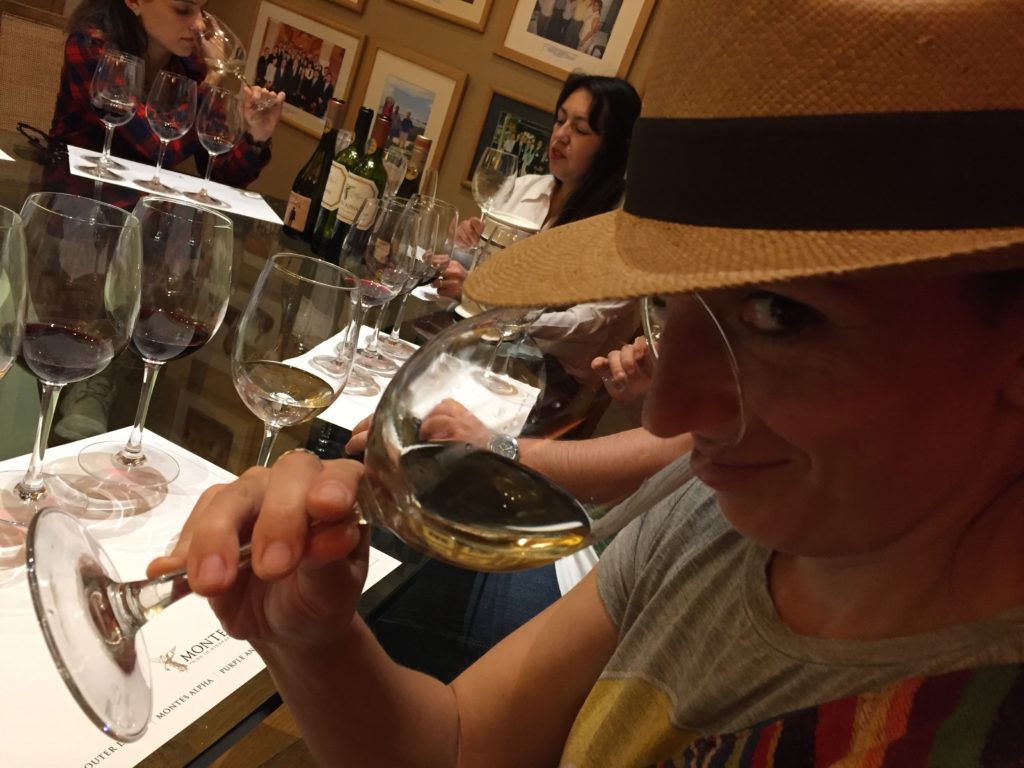
Note the pathetic level of pours… not cool, Montes.
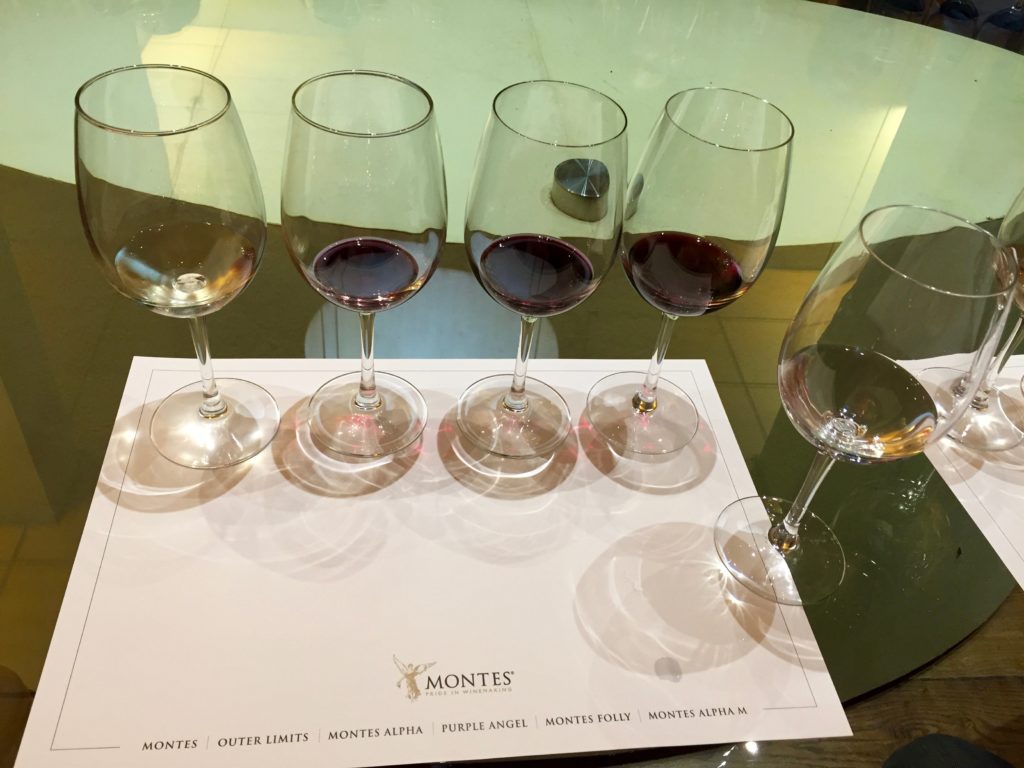
I picked up a bottle of the Carménère and another blend we didn’t sample but I know I like – Montes Twins (Malbec-Cabernet Sauvignon).
Hanging out with one of the winery’s founders, Aurelio Montes. He’s so crazy.
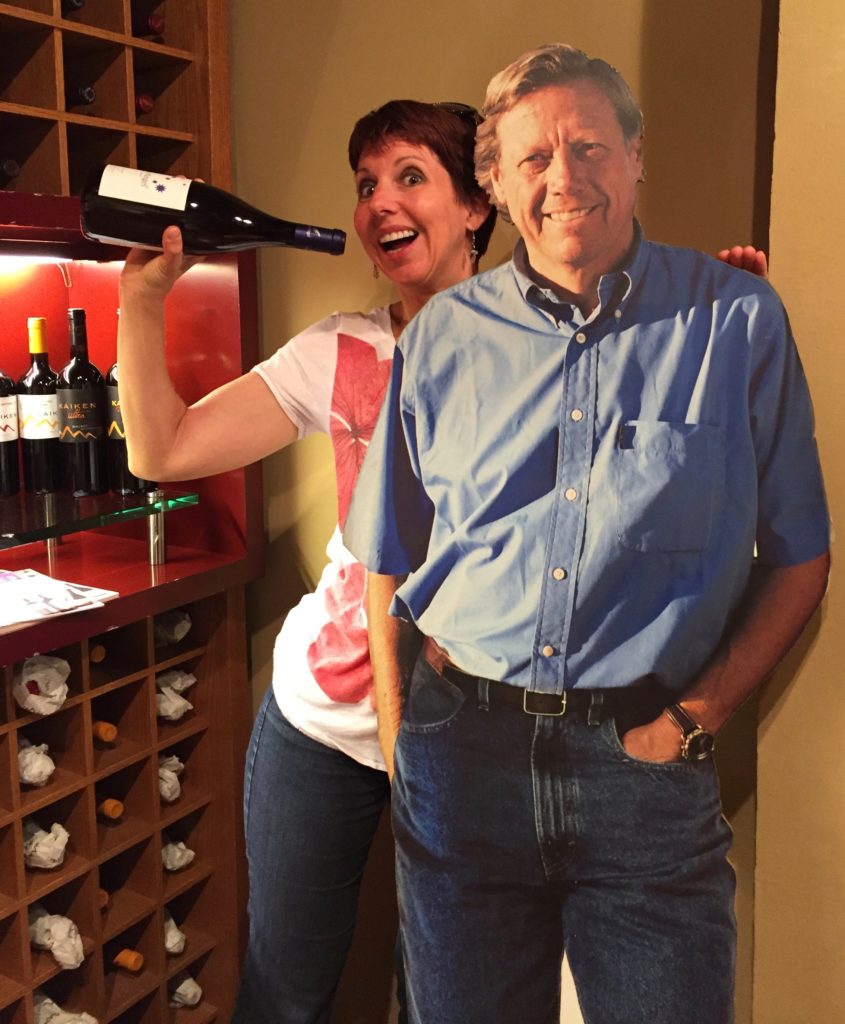
The cellar holds 800 French oak barrels, arranged in a semicircle. Gregorian chants echoed off the walls, creating a spiritual setting.
Panorama from the Montes patio.

Our little B&B was booked for the night, so we had to pack up and move across the road to Hotel Terraviña.
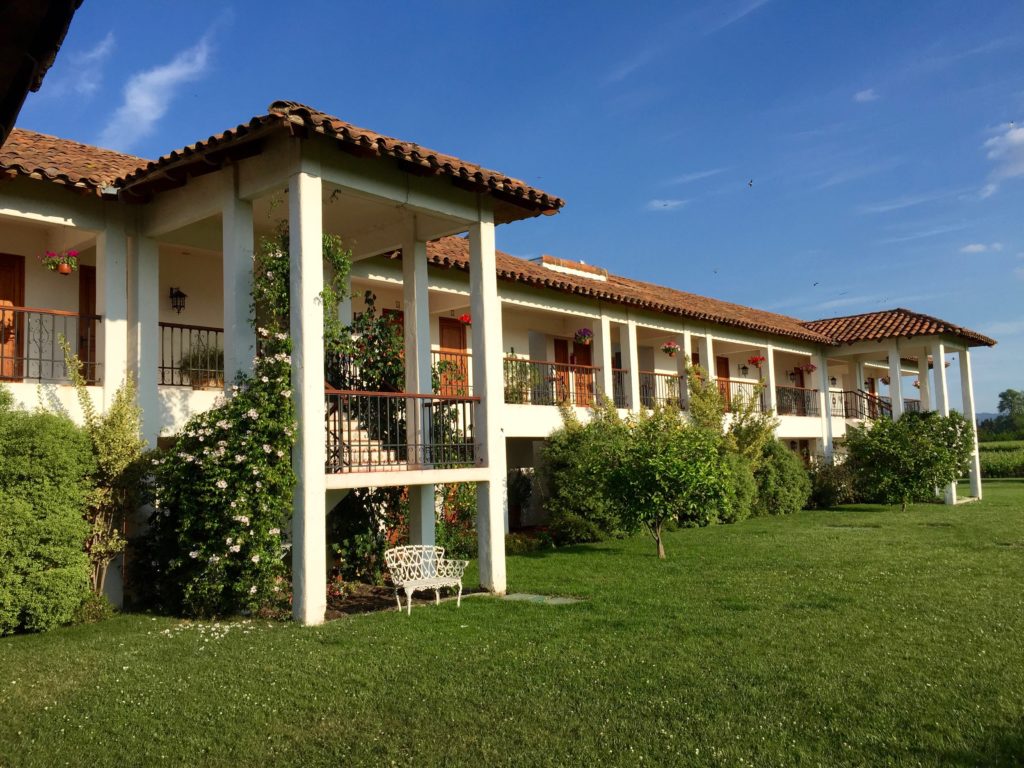
We read and snacked outside until dinnertime, when we walked through the vineyard to Casa Colchagua restaurant. My dinner of pork ribs with quinoa risotto was rich and hearty. I only wished we hadn’t pigged out on the hotel’s cheese platter beforehand.
The next morning, a cold fog had descended on the grape vines.
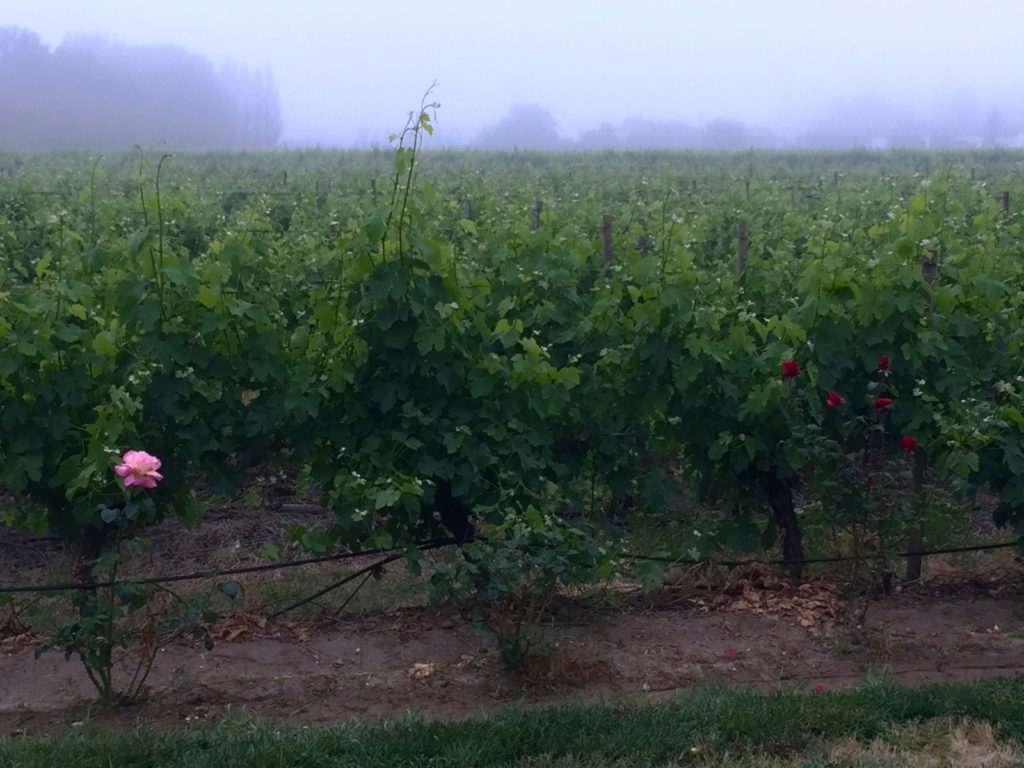
After breakfast, we decided to head home a little sooner than planned with one more stop on the way out of town.
We drove to Viña Laura Hartwig, a family-owned boutique winery. According to the website:
In 1966, Laura Bisquertt receives the Santa Laura estate from her father, who had purchased it in 1928. The land, as was customary in the area, was devoted to seasonal crops and livestock. Between 1966 and 1971, Laura’s husband, Alejandro Hartwig Carte, a civil engineer, manages the estate by farming traditional crops and running a diary farm. In 1971, he decides to look for new job opportunities abroad, thus joining the management team of German pharmaceutical Boehringer Ingelheim, in Montreal, Canada. The family lives in Canada for 10 years. During that time and due to multiple trips to United States and Europe, Alejandro becomes a great wine enthusiast and connoisseur. He recognizes North America’s growing demand for classic French wine varieties. He decides to take advantage of the excellent weather conditions of the Colchagua Valley and the increasing appetite for wines from the New World (wines from Australia and California had started to become popular around this time), and develops what he calls his “Retirement Project.”
Stella and I had planned to pick up a bottle or two and hit the road, but it turned out the winery offered horse-drawn carriage rides. How could we not do that? With Geronimo in the driver’s seat, we rolled through the gorgeous vineyard. The fog had burned off, revealing a bright blue sky and a perfect backdrop of verdant hills.
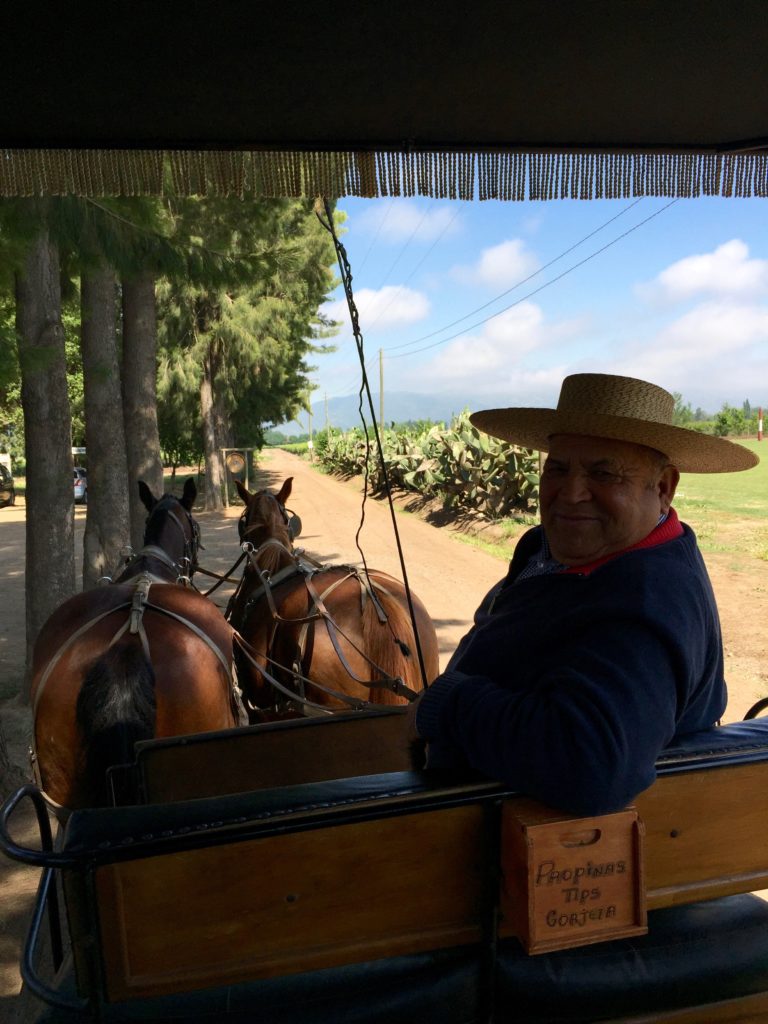
With the long drive ahead, I couldn’t partake in a wine sampling. The shopkeeper informed us that Laura Hartwig was known for producing 100% Petit Verdot, a variety that was usually used in blends, so Stella sat down with a glass while I poked around and took some photos.
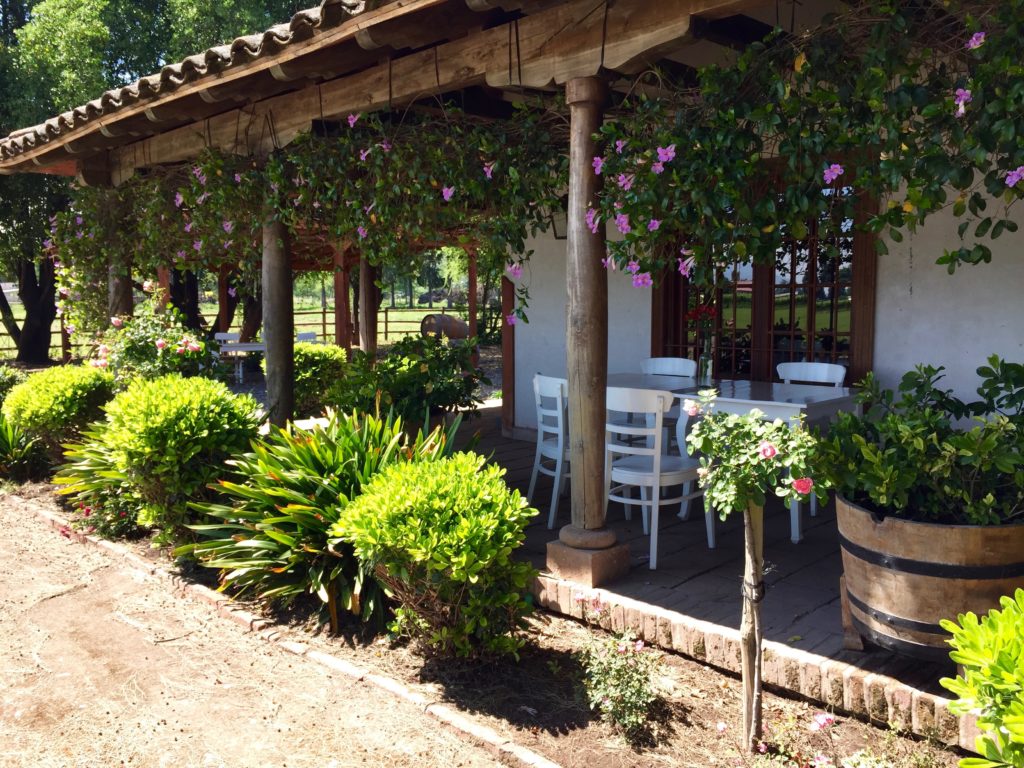
We both bought a bottle and then we took off for home with slim hopes of finding a restaurant for lunch.
In general, Chile shuts down on Sunday. As we drove through towns and slowed down by highway exits, it seemed nobody was out and nothing was open. Then we encountered Juan y Medio. I almost drove right past, despite Stella’s GPS directions. There was no exit, just the driveway into the restaurant straight off the highway lane (speed limit: 75 mph). The parking lot was already packed. We were fortunate to get a table, and we enjoyed tasty Chilean sandwiches. When we returned to the parking lot, we found all the cars’ windshields had been covered with cardboard to keep the interiors relatively cool in the pounding sun. Crazy.
Back in Santiago, Stella and I were both psyched to remember that we still had two days off work. Santa Cruz was the perfect weekend get-away. Great food and wine, plenty of downtime to read and relax, beautiful scenery, fresh air and sunshine, fun company … did I mention the wine? I have a feeling this wasn’t my last visit to Colchagua Valley.

